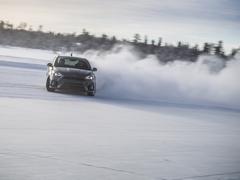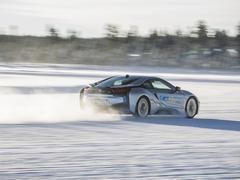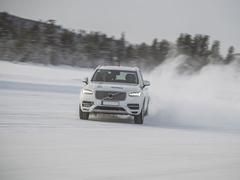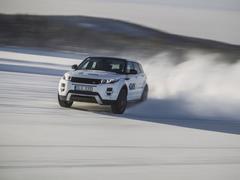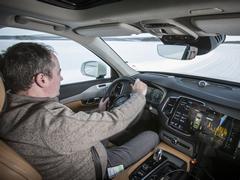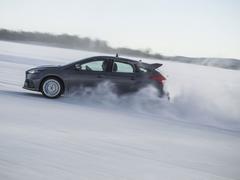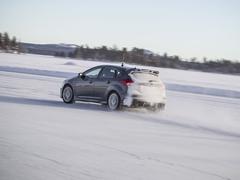Split the diff: GKN winter workshop
Where does GKN go after the Twinster axle in the Focus RS? To the Arctic Circle to find out!
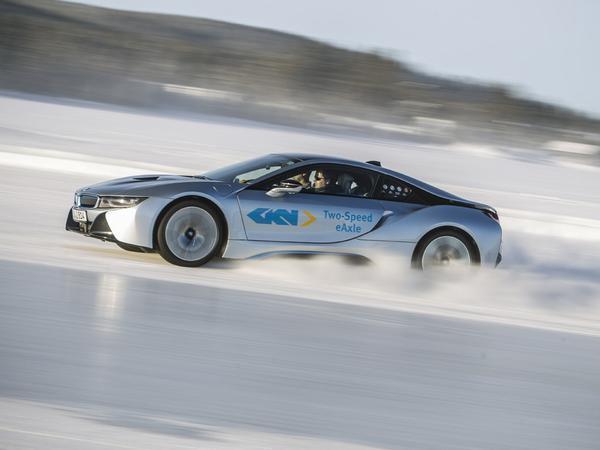
Yet this one - organised by British transmission giant GKN - is also different. For a start because there are lots of different cars here for us to hoon around in, from a Focus RS to a Jeep Compass. But also because there's a risk that we might actually learn something beyond sideways equals good.
Because while driving on ice and snow tells you pretty much nothing about how a car deals with any challenge other than ice and snow, it does enable some entertaining comparison of the way different systems work, and to experience some that haven't even been launched yet.
Who? What? Why?
GKN is well in the running for being the most successful British company most people have never heard of. It can trace its origins to the industrial revolution and grew from an ironworks into the sort of industrial conglomerate that smaller conglomerates cross the road to avoid. It employs 55,000 people around the world, 25,000 of who work for the GKN Driveline division that engineers and builds gearboxes, couplings and transmission components.
I know, this reads like I've cut and pasted Wikipedia. Stop yawning at the back. What renders GKN's recent work more compelling is the fact it's the company behind the very trick Twinster unit that underpins the Focus RS's dynamic abilities: the twin-clutch rear axle that allows the Ford to send different amounts of torque to each wheel for full-on biasing and general sideways driftiness. And having experienced just how far sideways the RS's much vaunted Drift Mode can get it on dry tarmac I'm very keen to see what it manages on a frozen lake.
There's an itinerary to stick to, though - and first up I'm in a BMW i8, which uses a GKN-made electric front axle. There's no chance to experience the ability of this to switch between two ratios; apparently low gear is inhibited in freezing temperatures. But I can report it puts on an impressively neutral display on ice as the 'leccy motor tries to offset the internally combusted power being sent to the back end.
Chip off the frozen block
The Focus RS comes next, and it's every bit as much fun as you'd imagine it to be. Forget Drift Mode, even with the dynamic controller left in normal and the stability control working the Ford is happy to kick its tail out on the 200m diameter ice circle. Switch the sentinels off and - although the angles increase - the Focus stays as friendly and predictable as a spaniel anticipating sausages for lunch. On the two-mile handling course that's been carved into the frozen surface I'm soon trying to live out my fantasies of being a Scandinavian rally driver (at about 50 per cent speed.)
Sorry, was this meant to be educational?
Hoonery over, now there's a chance for two back-to-back comparisons, the first featuring a pair of Evoques, one fitted with the Twinster rear axle and one with the standard system. As you'd imagine, the Twinster version feels far more agile when asked to change direction, although considerably less exciting than the Focus RS, proving just how much of transmission development is down to tuning.
Charge of the heavy brigade
Then things get new, with a transmission system that hasn't been launched yet. As its name suggests the e-Twinster is basically an electric version of the twin-clutch back axle, allowing hybrids with an electrically powered rear axle (or EVs) to get the same torque-swerving abilities. It's another with-and-without test, with two Volvo XC90 T8s, one fitted with the standard electric rear axle (which is also produced by GKN) and the other getting the twin-clutch system.
As with the Twinster each coupling can go from open to fully locked in under a tenth of a second, allowing torque to be shifted between wheels very quickly. Drive comes from a 60kW motor which also produces 177lb ft of torque, but which features 10:1 gearing to multiply this to a peak potential of 885lb ft on each axle; and unlike the standard Twinster it can operate even when there's no power coming from the engine, quickening response time.
The standard XC90 feels large and bus-like on the lake, finding some grip on its winter tyres, but with the front end nudging wide as soon as loadings increase. Like acid, it can be neutralized, but it's a messy process - shifting momentum with by either backing off the throttle abruptly or with a cack-handed attempt at a Scandinavian flick, but the resultant drifts don't last for long and it probably wouldn't work on the school run.
The e-Twinster feels radically different. This is a prototype installation with three different levels of assistance designed to show off the system rather than demonstrate how a finished car would perform; hence the polite covering of the Volvo badging with gaffer tape. Even the most gentle setting makes the XC90 feel far more responsive, with almost no understeer and the sensation of the back end helping out as soon as throttle is applied. The punchier settings - selected by a dash-mounted iPad - increase this dramatically, in the most extreme the T8 is doing an unlikely impression of a vast Focus RS. GKN says the same technology will be in production cars in 2017, and it's not hard to see the XC90 as the obvious first candidate.
It's so much fun that, after mounting my own Festival of Terminal Understeer in a Jeep Compass, I beg another go in instead of having to experience a Fiat 500X.
The future's bright
So, what did I learn? That it's fun to go sideways, even if you have to travel to practically the Arctic Circle to do so. But also that, as the car industry gets greener and more sensible, serious consideration is still being given to making sure that cars will handle as well as the ones they're set to replace.
https://m.youtube.com/watch?v=E4B0SIMjvl0
Once you can allocate, instantly and under software, the torque arriving at each driven wheel you have the potential for maximum optimisation, both for handling and for traction.
Obviously you need the right sensor suite to gather the appropriate data and the right software and vehicle dynamics engineers to implement the system, it will be interesting to see where these people go in successive iterations.
The options that can be presented to the driver are infinite and so must be pruned by the manufacturer. The Focus RS has a few modes, which may become the standard for many cars. However the potential is there to offer, say, 911 owners far more with maybe custom settings, especially for RS owners.
Interesting stuff.
Gassing Station | General Gassing | Top of Page | What's New | My Stuff

